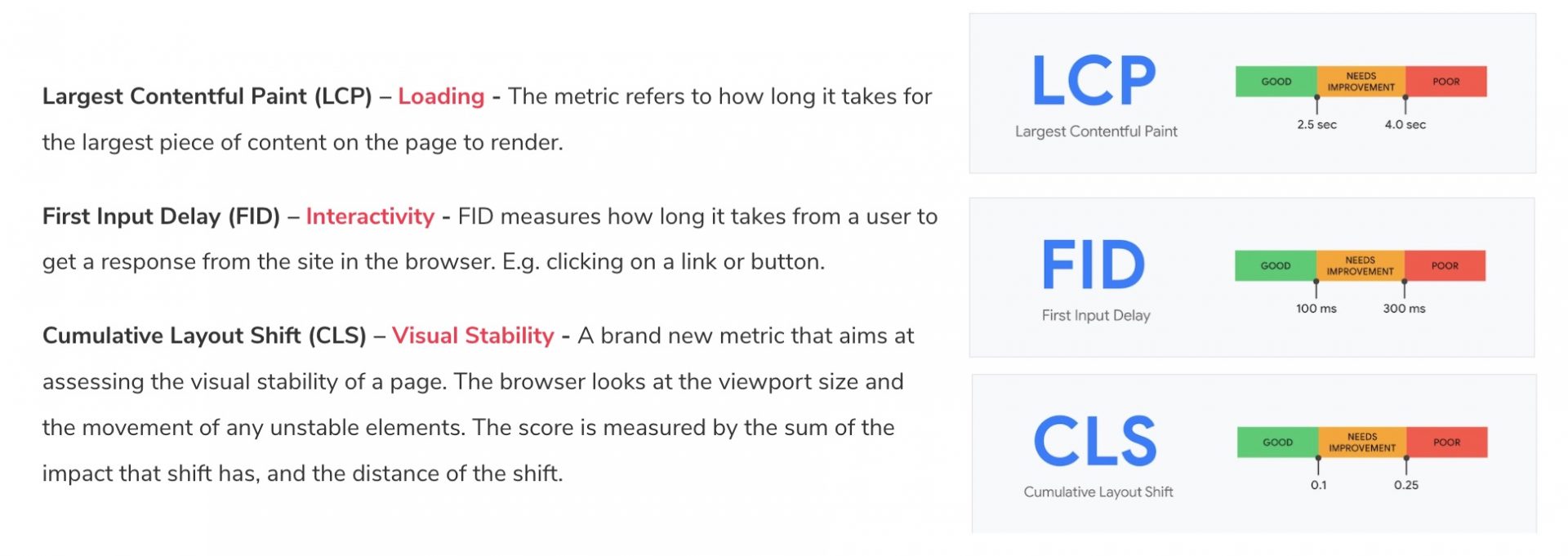As we’ve detailed previously, Google has formally announced they will be using page experience as a ranking signal from 2021.
This shouldn’t come as a huge surprise. Many people (myself included) believe Google has been using UX metrics to influence rankings in one way another for a couple of years. With measures such as the length of time users spend browsing documents (web pages) referenced in Google patents stating their intent to use such factors to improve the way pages are ranked in their search results.
Whether or not this is actually the case has been regularly debated in the industry, and consistently rebuffed by resident SEO troll and Google representative Gary Ilyes, including here on Reddit a year ago.
We do however know thanks to Nick Frost, the Head of Google Brain (the division of Google responsible for RankBrain, that Google uses metrics commonly referred to as dwell time (how long a user stays on a page) to feed machine learning. In other words, they have data available that they could use as ranking signals.

To suggest Google would build such a complex element of their algorithm (RankBrain), using machine learning to determine what users clicked and stayed on in the past would then completely ignore those metrics when processing search queries is hugely questionable.
In any case, we now know for certain that Google will be officially using core web vitals metrics to assess page experience within their results. It’s therefore clearly time to start thinking of UX as an essential component of SEO rather than an afterthought.
The Three Pillars of SEO
Originally referenced by Dave Naylor back in 2010 and explained here by Technical SEO superstar Barry Adams, the three pillars of SEO is a simple framework consisting of Technology, Relevance, and Authority, useful for teaching SEO by grouping factors that influence organic performance to different degrees into three themes.

These fundamentals of SEO are still as important as ever. However, until recently, not many SEO’s have taken user experience as seriously as these traditional ranking factors, with technical considerations typically more focused on the ability of Google to understand site architecture and content, rather than users.
Another example, Schema markup – which is designed to help search engines, rather than users, understand the context of a page, in-turn enhancing Google’s search engine result page experience and increasing zero-click searches!
SEO’s could be forgiven then, if they’ve been paying more attention to these well recognised ranking factors rather than the needs of their website users.

Experience as the Fourth Pillar of SEO
With Google’s most recent announcement there’s no doubt that SEO’s will start taking experience more seriously over the coming months.
Furthermore, as we move in to an era dominated by machine learning, with Google getting smarter than ever at interpreting search intent and page quality, it would make sense to expand our approach to consider experience as a logical fourth pillar of SEO, with Google likely to move beyond core web vitals measures into more advanced methods of measuring user satisfaction with their search results in the future.

Thinking about experience as a core element of SEO and the associated implications on rankings and traffic will lead to a more compelling business case for redesigning page templates and visual elements, where in the past this was seen as solely a design based problem focused on boosting conversion rates for existing traffic.
Integrating experience into your SEO approach
There have always been tensions and trade-offs to navigate between SEO and design, but collaboration between UX and SEO practitioners is now more important than ever. Here I’ve summarised three areas to consider when trying to integrate UX and SEO best practices.
Don’t run before you can walk
We’re not talking here about throwing SEO fundamentals out of the window and focusing purely on UX, we’re talking about combining UX best practice with SEO fundamentals to achieve optimal performance and much closer working practices in the early stages of website prototyping.

Take the example of having visible text on a page, a foundational aspect of SEO, essential in order for Google to understand the context of your page. These basic principles need to be in place before we can start to focus on more advanced measures such as page experience.
Define a Collaborative Playbook
When looking to align UX and SEO best practices, a good place to start would be on developing a collaborative playbook between SEO and design teams.
Google have themselves released UX best practice guidance in the past across a range of verticals, which makes essential reading for SEO’s and designers alike.

Google refer to these documents as a “Collection of best practices to delight your users”. The playbooks offer insights into what Google explicitly recommend when it comes to UX best practices across different verticals. Choose your industry below to review specific recommendations.
- Google UX Playbook for Retail & E-Commerce (PDF, 108 pages)
- Google UX Playbook for Lead Gen (PDF, 44 pages)
- Google UX Playbook for Travel (PDF, 80 pages)
- Google UX Playbook for Finance (PDF, 106 pages)
- Google UX Playbook for Real Estate (PDF, 60 pages)
- Google UX Playbook for News and Content Sites (PDF, 62 pages)
- Google UX Playbook for Auto (PDF, 39 pages)
As a reminder, it is essential to focus on both incorporating SEO fundamentals such as content structure, internal links, anchor text etc. alongside UX best practices identified in the playbooks listed above.
Measure more than just core web vitals
Clearly many SEO’s will now be looking to track core web vitals, which can now be measured using the Chrome UX Report via Page Speed insights, and over the next few months, Google will be updating Lighthouse and Search Console to provide further analysis on the Core Web Vitals.

Outside of core web vitals, it would also make sense to start tracking additional UX performance metrics.
Not all of the following measures will be accessible by Google, but keeping an eye on these trends will give you a good indicator of how your site is performing in terms of user engagement.
| Measure | Where to find it |
| Task success (e.g. Goal completions) | Google Analytics > Conversions |
| Scroll depth | Google Analytics > Events (via GTM) |
| ‘Dwell time’ | Not available in GA, closest alternative = session duration (source = organic) |
| Attitudinal metrics | Online surveys via Unbounce, VWO etc. |
To take this a step further, you can use custom JavaScript events to measure more advanced behaviour.
| Measure | How to track it |
| Content consumption depth | Fire tag after 5 seconds without scroll movement (removes initial ‘test’ scrolling) |
| Single element (e.g. button) engagement | Fire after 3 seconds mouseover element |
| Rage clicking!! | Fire when 3 clicks occur within 1 second on a page |
Again, whether metrics such as dwell time are already used as ranking signals or not, increasing user engagement on your site can only be a good thing!
Conclusion
It’s time to consider experience as a logical fourth pillar of SEO, with Google able to move beyond core web vitals measures into more advanced methods of measuring user satisfaction based on data they’re already collecting as part of their machine learning algorithms, which would seem like a logical next step as they gain more confidence in the data.
We can debate whether or not Google are already using more advanced UX measures alongside their recently announced page experience metrics, but regardless of this, focusing on improving user experience in line with best practice will not only lead to better SEO performance, it should lead to increased leads, more sales and a better return from all traffic acquisition channels – it really is a no brainer!
Further Reading
Google’s Page Experience update explained
Measuring Core Web Vitals – Marie Haynes
Google’s complete list of UX playbooks
Is Dwell time a ranking factor? – Ahrefs
Google data logging – using click data to influence search results – Britney Muller
UX and SEO: better together



